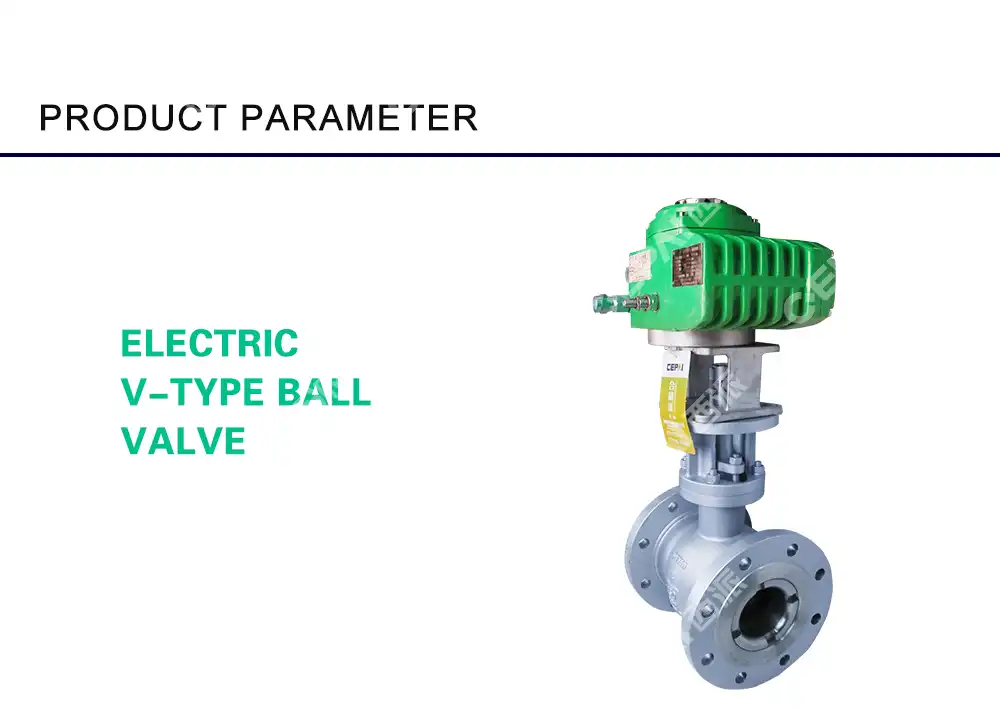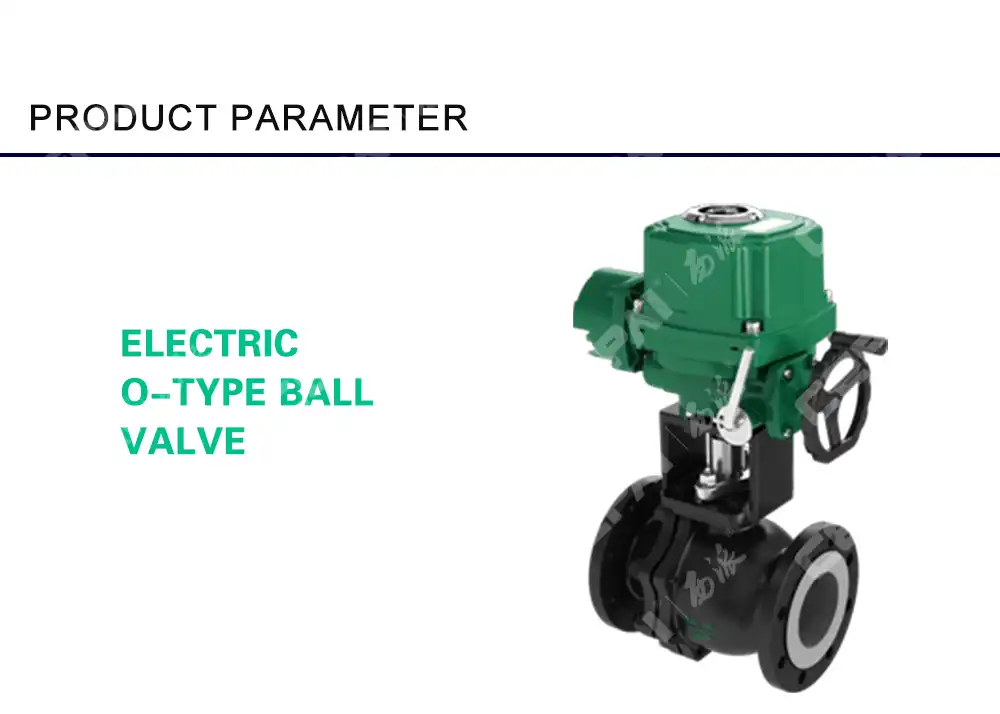Understanding the Design and Functionality of Electric Stainless Steel Ball Valves
Material Composition and Corrosion Resistance
Electric stainless steel ball valves are engineered to withstand the most demanding corrosive environments. The primary component, stainless steel, is renowned for its exceptional resistance to various forms of corrosion. This material's composition typically includes chromium, nickel, and molybdenum, which form a protective oxide layer on the surface, effectively shielding the valve from chemical attack. Different grades of stainless steel, such as 316 or 904L, are selected based on the specific corrosive agents present in the application. The ball, stem, and body of the valve are all crafted from carefully chosen stainless steel alloys to ensure uniform corrosion resistance throughout the valve assembly.
Electric Actuation Mechanism
The integration of electric actuation in stainless steel ball valves brings a new level of control and automation to corrosive fluid handling. Electric actuators utilize compact, powerful motors to rotate the valve stem, which in turn moves the ball to open, close, or modulate flow. These actuators can be equipped with various control interfaces, including analog signals, digital communications, or manual overrides, providing flexibility in system integration. The electric components are typically housed in sealed enclosures, protected from the corrosive environment, ensuring long-term reliability. Advanced models may include features such as position feedback, torque sensing, and fail-safe mechanisms, enhancing the valve's functionality in critical applications.
Sealing and Leak Prevention
Effective sealing is crucial in corrosive environments to prevent leaks and maintain process integrity. Electric stainless steel ball valves employ sophisticated sealing technologies to achieve this. The ball is precisely machined to fit snugly against specially designed seats, often made from corrosion-resistant polymers like PTFE or PEEK. These seats provide a tight seal when the valve is closed and minimize friction during operation. Additionally, the stem is sealed using multiple barriers, including O-rings, packing glands, or bellow seals, depending on the severity of the corrosive conditions. Some advanced designs incorporate live-loaded packing systems that maintain consistent sealing force even as the packing material wears over time, ensuring long-term leak-free performance.

Applications and Benefits in Corrosive Environments
Chemical Processing Industry
In the chemical processing industry, electric stainless steel ball valves play a crucial role in handling a wide array of corrosive substances. These valves are extensively used in reactors, distillation columns, and storage tanks where acids, alkalis, and organic solvents are processed. Their ability to withstand aggressive chemicals while providing precise flow control makes them indispensable in maintaining process efficiency and safety. The electric actuation allows for remote operation, reducing personnel exposure to hazardous environments. Moreover, the corrosion-resistant nature of these valves significantly extends their service life, minimizing downtime and maintenance costs in chemical plants.
Wastewater Treatment Facilities
Wastewater treatment plants present a uniquely challenging environment for valves due to the presence of corrosive chemicals, abrasive particles, and biological contaminants. Electric stainless steel ball valves excel in this setting, offering reliable performance in both influent and effluent systems. Their robust construction resists the corrosive effects of chlorine, sulfides, and other chemicals used in water treatment processes. The electric actuation enables automated control of flow rates and directions, essential for optimizing treatment cycles. These valves are particularly valuable in sludge handling and chemical dosing applications, where precise control and corrosion resistance are paramount for maintaining water quality standards.
Offshore Oil and Gas Platforms
The harsh marine environment of offshore oil and gas platforms demands valves that can withstand not only corrosive fluids but also salt spray and extreme weather conditions. Electric stainless steel ball valves meet these challenges head-on, providing reliable service in various subsystems, including production manifolds, injection systems, and process control lines. Their resistance to saltwater corrosion and ability to handle high-pressure, high-temperature fluids make them ideal for these applications. The electric actuation allows for remote operation from control rooms, enhancing safety by reducing the need for personnel to access hazardous areas. Additionally, these valves can be integrated into platform-wide control systems, enabling real-time monitoring and adjustment of fluid flows to optimize production processes.
Maintenance and Long-Term Performance Considerations
Regular Inspection and Cleaning Protocols
Maintaining electric stainless steel ball valves in corrosive environments requires a proactive approach to ensure long-term reliability. Regular inspection protocols should be established, focusing on visual checks for signs of corrosion, wear, or damage. This includes examining the valve body, actuator housing, and connection points for any discoloration or pitting. Cleaning procedures are equally important, involving the removal of any accumulated debris or chemical residues that could impair valve function. For valves handling particularly aggressive substances, more frequent inspections may be necessary. It's crucial to use cleaning agents compatible with the valve materials to avoid inadvertently causing damage. Documentation of these inspections and cleaning activities helps in tracking valve performance over time and predicting maintenance needs.
Lubrication and Seal Replacement Strategies
Proper lubrication is essential for the smooth operation of electric stainless steel ball valves, particularly in corrosive settings where friction can accelerate wear. Selection of lubricants must be carefully considered, ensuring compatibility with both the valve materials and the process fluids. In many cases, specialized fluoropolymer-based greases are used for their chemical resistance and wide temperature range capabilities. Seals and gaskets, being critical for preventing leaks, require periodic replacement. The frequency of replacement depends on factors such as operating conditions, cycle frequency, and the corrosiveness of the media. Implementing a predictive maintenance strategy, possibly incorporating sensors to monitor valve performance, can help optimize the timing of seal replacements, balancing between premature replacement and the risk of failure.
Corrosion Monitoring and Preventive Measures
In highly corrosive environments, implementing a comprehensive corrosion monitoring program is crucial for maximizing the lifespan of electric stainless steel ball valves. This may involve the use of corrosion coupons, electrical resistance probes, or ultrasonic thickness measurements to track material degradation over time. For valves exposed to particularly aggressive media, additional protective measures may be warranted. These could include the application of specialized coatings or the use of cathodic protection systems in certain environments. Regular analysis of the process fluids can help identify changes in corrosivity that might necessitate adjustments in maintenance practices or even valve material selection. By staying vigilant and proactive in corrosion prevention, operators can significantly extend the service life of these critical components, ensuring continued reliability in challenging industrial applications.
Conclusion
Electric stainless steel ball valves stand as a pinnacle of engineering innovation for corrosive environments. Their robust construction, coupled with precise electric actuation, offers unparalleled performance in the most challenging industrial settings. From chemical processing to offshore platforms, these valves provide reliable flow control while resisting degradation. As industries continue to push the boundaries of material handling, the role of these specialized valves in ensuring operational efficiency and safety cannot be overstated. By understanding their design, applications, and maintenance requirements, engineers and plant operators can leverage the full potential of electric stainless steel ball valves to overcome the challenges posed by corrosive environments.
FAQs
1. What makes electric stainless steel ball valves suitable for corrosive environments?
Their stainless steel construction and specialized seals provide excellent corrosion resistance, while electric actuation allows for precise, remote control.
2. How often should these valves be inspected in highly corrosive settings?
Inspection frequency depends on the specific environment, but generally, quarterly checks are recommended, with more frequent inspections for severe conditions.
3. Can electric stainless steel ball valves handle high-temperature corrosive fluids?
Yes, many models are designed for high-temperature applications, but it's crucial to select valves rated for the specific temperature range of your process.
4. What are the advantages of electric actuation in corrosive environments?
Electric actuation allows for remote operation, precise control, and integration with automated systems, enhancing safety and efficiency in hazardous areas.
5. How do I choose the right stainless steel grade for my application?
Selection depends on the specific corrosive agents present. Consult with valve manufacturers or corrosion specialists to determine the most suitable grade for your needs.
Quality Assurance in Electric Stainless Steel Ball Valve Manufacturing | CEPAI
At CEPAI Group, we understand the critical importance of valve quality in industrial automation and safety. Our electric stainless steel ball valves are manufactured under stringent ISO quality systems, ensuring unparalleled reliability in corrosive environments. From design to final testing, every step adheres to international standards and customer specifications. Our commitment to excellence drives us to continually invest in advanced testing equipment and rigorous inspection processes. For top-tier electric stainless steel ball valves from a trusted manufacturer, contact us at cepai@cepai.com.

References
Smith, J.A. (2022). "Corrosion Resistance in Industrial Valve Design." Journal of Materials Engineering and Performance, 31(4), 2567-2580.
Johnson, R.B., & Thompson, L.M. (2021). "Electric Actuation Technologies for Industrial Valves." Automation and Control Engineering, 15(2), 112-128.
Williams, E.C., et al. (2023). "Advancements in Sealing Technologies for Corrosive Fluid Handling." Chemical Engineering Progress, 119(3), 45-53.
Patel, S.K. (2022). "Maintenance Strategies for Valves in Harsh Environments." Plant Engineering and Maintenance, 47(6), 78-85.
Chen, Y., & Davis, R.T. (2021). "Material Selection for Valve Components in Corrosive Applications." Materials Performance, 60(5), 32-39.
Anderson, M.L. (2023). "Innovations in Ball Valve Design for Chemical Processing Industries." Industrial Valve Quarterly, 28(2), 14-22.

_1746598538016.webp)



